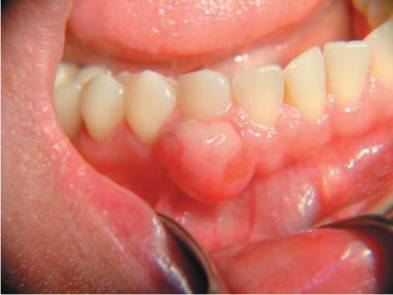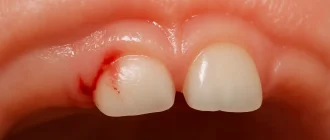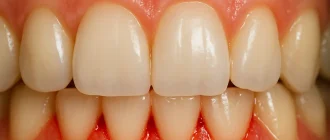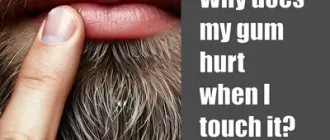Gum irritation is a frequent occurrence that is typically a result of the accumulation of plaque and bacteria along the gumline. This can lead to gum bleeding, redness or just stay without hurting. However, if you happen to notice a bump in that area, there can be various reasons for its occurrence. While it is not typically considered a medical emergency, it is important to inform your dentist about it to rule out any potential serious problems. Keep reading to understand the most prevalent causes of bumps on the gums.
Cyst
A cyst is a tiny sac containing liquid, soft matter, or even air. Dental cysts can develop on the gums, typically near the roots of decayed or submerged teeth. They gradually enlarge and usually do not pose a significant problem. In the initial stage of tooth cyst development, you will not feel any pain. Nonetheless, larger cysts can exert pressure on the teeth and eventually weaken the jaw. Fortunately, most dental cysts can be easily eliminated through a simple procedure.
Abscess
This condition is also referred to as a “periodontal abscess.” It occurs due to bacterial infections. A bump that feels soft and warm characterizes an abscess. Even if you don’t feel any pain at first, pretty soon the tooth abscess will make itself known with painful sensations as well. Typically, abscesses are painful and contain pus. Here are some of the typical signs:
- Throbbing pain
- Discomfort experienced on a single side that radiates towards the ear, jaw, and neck.
- Pain that worsens when laying down
- The gums and face experience redness and swelling.
Canker Sore
These are minor canker sores that may develop near the gum area. Although they are not dangerous, they can cause discomfort when located inside the mouth. Generally, they present as white or yellow marks with a red outline, being either flat or slightly elevated, and are sensitive. Generally, these sores heal on their own within one to two weeks. Meanwhile, pain can be reduced by using over-the-counter pain relievers.
Fibroma
The most frequent reason for the presence of small growths resembling tumors on the gums is noncancerous lumps that develop on gum tissue that has been irritated or injured. These lumps typically occur as a result of irritation caused by dentures or other oral appliances. Fibromas, as they are called, do not cause pain and have a hard, smooth, dome-shaped texture. They may appear darker or lighter than the surrounding gum tissue. Generally, fibromas do not need to be treated, but if they are large, doctors may opt for surgical removal.
Pyogenic Granuloma
A red protrusion occurs inside your mouth, which manifests as a swollen lump filled with blood that can easily bleed. The exact cause of this is unclear, but it is suspected that small injuries and irritations contribute to its formation. Typically, these bumps are soft, do not cause pain, and are colored deep red or purple.
Oral Cancer
This passage discusses oral cancer, which can occur in any region of the mouth. If there is a cancerous growth on the gums, it might appear as a small protrusion, lump, or thickened area of the skin. Additional symptoms may include the presence of a white or red patch, pain in the tongue or jaw, teeth that are loose, and discomfort while chewing or swallowing. To address any worries, a gum biopsy, in which a doctor removes a sample of the bump and analyzes it for cancerous cells, can be performed.
It is usually not a major concern if there are raised areas on your gums, but it is advisable to have them examined by your dentist as a precautionary measure. This will help ensure that your oral health is in a good condition and your smile remains vibrant.
A painless bump on the gum may disappear on its own, or it may require a treatment procedure. If the bump does not go away within a few days or if additional symptoms appear, rush to the dentist.






